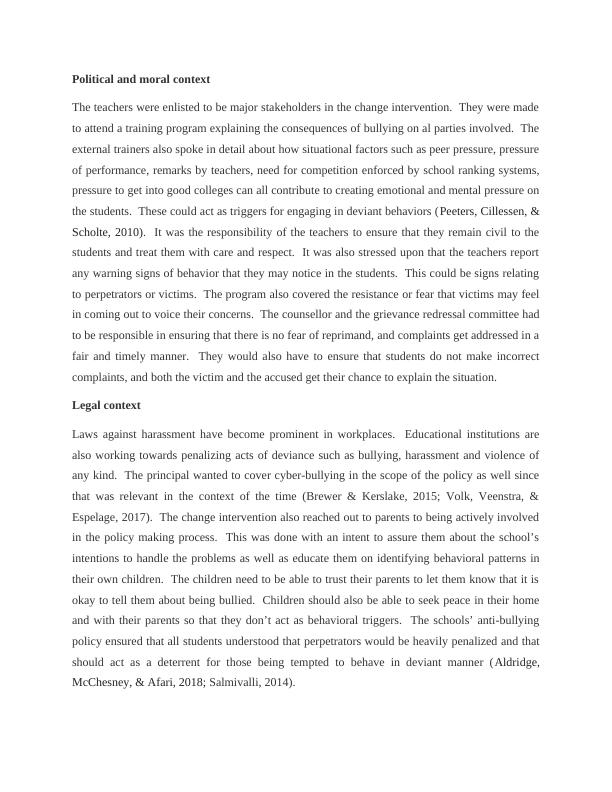Case Study: Tackling Bullying in a School - Desklib
This case study report focuses on a change initiative enacted at a Western Sydney High School to address student attendance, truancy, and behavioral problems affecting academic outcomes.
10 Pages3602 Words152 Views
Added on 2023-03-30
About This Document
This case study report discusses the initiatives taken by a school to tackle the problem of bullying. It explores the short-term and long-term changes made, the social and psychological context, the political and moral context, the legal context, and the processes, timelines, and resources involved. The report emphasizes the importance of creating a safe and inclusive environment for students.
Case Study: Tackling Bullying in a School - Desklib
This case study report focuses on a change initiative enacted at a Western Sydney High School to address student attendance, truancy, and behavioral problems affecting academic outcomes.
Added on 2023-03-30
ShareRelated Documents
End of preview
Want to access all the pages? Upload your documents or become a member.
Cognitive Psychology PSYC2300
|9
|2504
|92
Mental Health Discussion Questions Research 2022
|10
|2281
|22
Implementing Anti-Bullying Policy in Schools for Better Future
|3
|414
|316
Introduction to Sociology PDF
|8
|529
|269
Health Promotion Program for Bullying Reduction in Schools
|9
|2403
|81
Bullying in School: Causes and Prevention Strategies
|5
|998
|32



